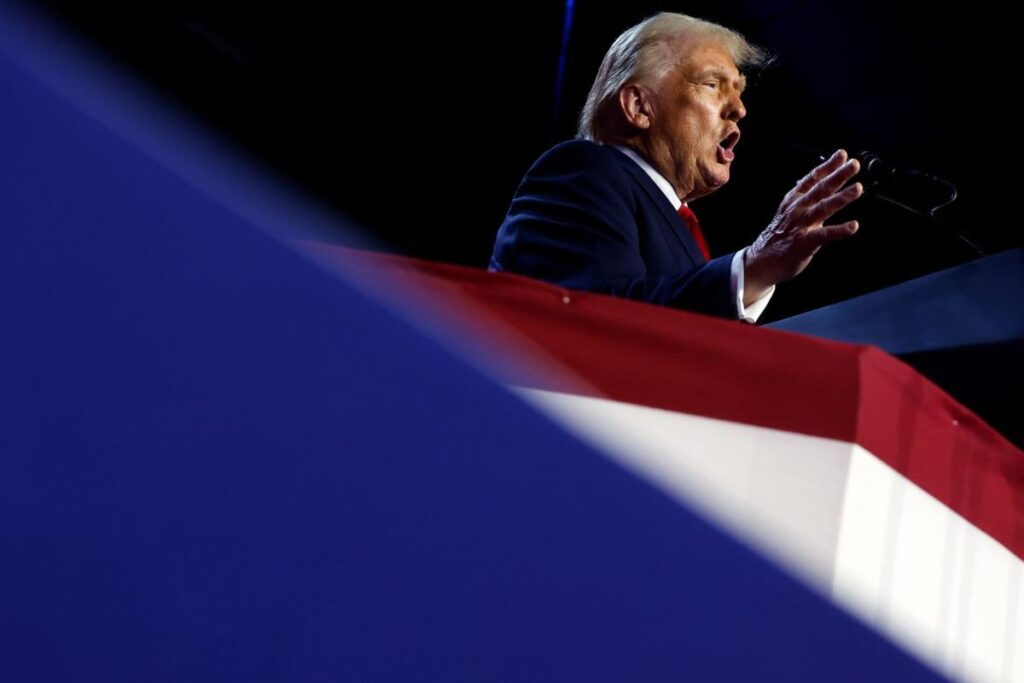Donald Trump is currently assembling a new administration as he heads into his second term, drawing on a mix of Wall Street and business executives, alongside loyalists from his previous term. As Republicans secure control of the White House and potentially the Senate and House of Representatives, Trump’s nominees for around 4,000 government positions, including over two dozen cabinet roles, are expected to face a smoother confirmation process. Trump’s transition team, established in August, involves notable figures like Howard Lutnick, CEO of Cantor Fitzgerald, and Linda McMahon, co-founder of WWE. Additionally, Susie Wiles, his campaign manager, has been appointed as White House chief of staff, marking a significant milestone as she becomes the first woman to hold the position.
Trump’s transition efforts are more organized compared to his first term in 2017, as the team aims to sidestep early chaos. While he refrained from revealing personnel preferences before the election, speculation regarding potential cabinet appointments is gaining momentum. The transition team is exploring a range of candidates, particularly for pivotal roles like Secretary of Treasury, which entails a broad responsibility for managing the global economy and overseeing the U.S. financial system. Scott Bessent, Jay Clayton, and Senator Bill Hagerty have surfaced as contenders for this influential position, each bringing distinct experiences and perspectives to the economic strategy discussions.
Substantial interest revolves around Scott Bessent, a macro hedge fund manager who has been vocal in support of Trump’s economic agenda. He has criticized current Treasury policies and proposed adjustments that align with a more protectionist stance. Meanwhile, Jay Clayton, the former SEC chair, could leverage his regulatory background, while Hagerty’s connections within the Senate Banking Committee add further credibility. Another notable figure is Robert Lighthizer, who served as Trump’s Trade Representative during the first term and maintained a close advisory relationship with Trump. His potential appointment raises concerns among investors due to his firm stance on trade issues, hinting at possible duties in either the Treasury or Commerce Department.
Equally important is the selection for Secretary of State, a position critical for maintaining U.S. foreign relations and security objectives. Potential candidates include Ric Grenell, Senator Bill Hagerty, and former Treasury Secretary Steven Mnuchin, all of whom have varying degrees of loyalty and experience from Trump’s previous administration. Grenell, known for his staunch support of Trump, and Hagerty’s diplomatic background as Ambassador to Japan are appealing for their potential to facilitate Trump’s foreign policy agenda, while Mnuchin’s extensive network could deliver significant advantages in navigating relations post-election.
The Commerce Department has garnered increased relevance in light of recent economic policies, and potential appointments include Lighthizer and Linda McMahon. The U.S. Trade Representative role, integral for driving Trump’s populist economic strategy, may feature candidates like Jamieson Greer or Stephen Vaughn, both familiar with the negotiations and objectives of the prior administration. As Trump and his team flesh out this cabinet, the choices presented reflect a blend of continuity and evolution, balancing familiar figures with the urgency posed by evolving global economic landscapes.
In summary, Trump’s second-term administration is shaping up with key appointments from his first term and outside allies, aimed at reinforcing a potent economic and diplomatic team. His transition process, marked by heightened organization and strategic candidate selection, indicates a desire to leverage historical relationships and align with a definitive agenda while navigating a complex political environment. With a Republican majority facilitating the path for confirmations, Trump’s nominations may usher in a steadfast return to his preferred economic philosophies and foreign policy directives, capitalizing on lessons learned from the previous term while responding to the present-day challenges.

